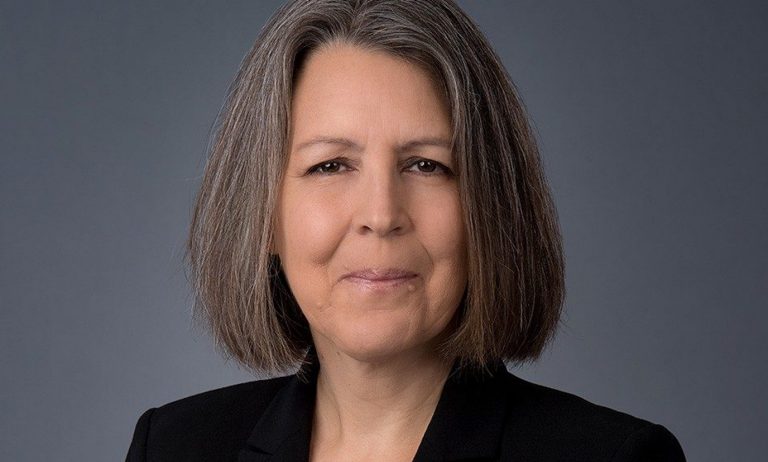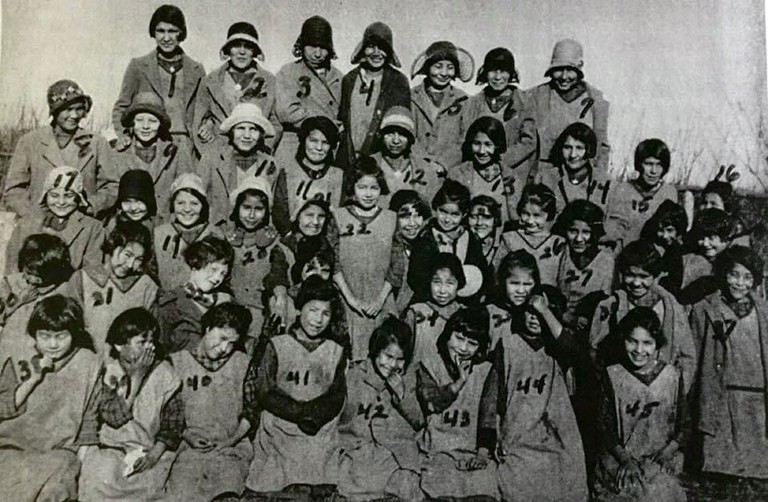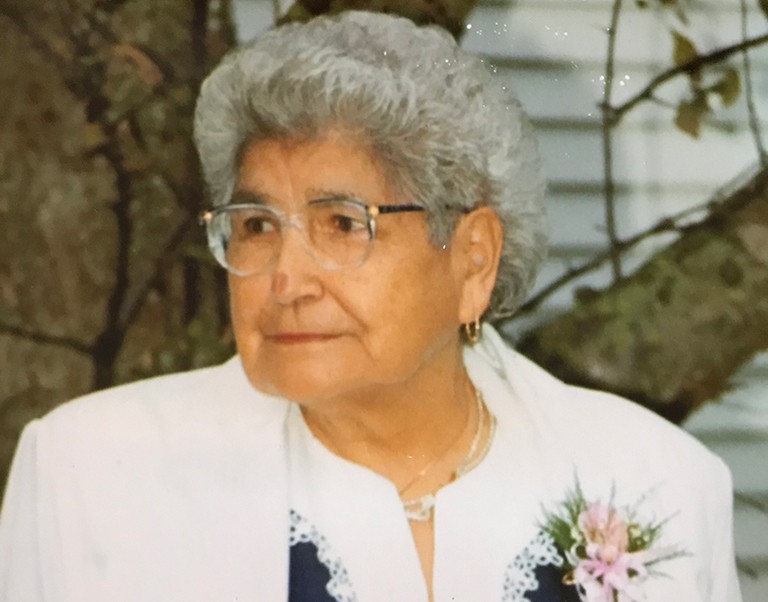Orange Shirt Day honours generations of children and their families harmed by the residential school system

Manon Tremblay (BA 03) is senior director of Concordia’s Indigenous Directions.
On Orange Shirt Day, my thoughts turn to my kôhkom (grandmother).
For First Nations, Métis and Inuit people, Orange Shirt Day is a day of grief for those we have lost as well as those who have survived but who continue to be haunted by their experiences in residential schools. It is a day where we reflect on this shameful part of Canada’s history: more than 150 years of racist assimilation policies that sanctioned the forcible removal of Indigenous children from their families to eradicate our cultures, our languages and our very sense of being.
Thousands of children died in these schools of physical abuse, communicable diseases, malnutrition and suicide. Some died of exposure after escaping.
Orange Shirt Day is observed every year on September 30 by Indigenous peoples in recognition of the permanent harm caused to the estimated 150,000 Indigenous children who were forced to attend Indian residential schools and 200,000 who attended day schools.
It is also marked to bring awareness of the intergenerational trauma that persists in our communities and that continues to impact even those of us, like myself, who were lucky enough to be educated in the regular public education system.
My own upbringing was heavily influenced by the trauma experienced by three generations of survivors wrestling with their maci-manitowak (bad spirits).
When September comes around, my thoughts always turn to my extended family, most of whom are residential school survivors. I think especially of my kôhkom and her siblings, because their generation is the one that lost everything.
In the space of two short decades, my people went from being nomadic bison hunters — fearsome warriors with a complex and rich social, political and culture life — to starving wards of the state relegated to reserves and dependent on handouts.
 Photographed at age 18, Mary Greyeyes (kôhkom), who is number 25 in the photo, was forcibly taken to St. Michael’s Indian Residential School in Duck Lake, Saskatchewan at age 6.
Photographed at age 18, Mary Greyeyes (kôhkom), who is number 25 in the photo, was forcibly taken to St. Michael’s Indian Residential School in Duck Lake, Saskatchewan at age 6.
‘My kôhkom was forcibly taken to St. Michael’s Indian Residential School at age 6’
Kôhkom was born in 1913 on the Muskeg Lake Reserve in Saskatchewan in a prominent Cree family. Her paternal grandfather was Wasêkamatawâp (Grey Eyes), son of Chief Ka-Sihkoswayân (Ermineskin). On the maternal side, her great-grandfather was Chief Mistawâsis (Big Child).
Through her great-grandmothers on both sides, she was a great-niece of Chief Pîhtokahanapiwiyin (Poundmaker), and, as a result, was part Nakoda, through Pîhtokahanapiwiyin’s father, Sikâkwayân (Skunk Skin).
Before the reserve system, our family travelled with Pîhtokahanapiwiyin’s band. Kôhkom’s father was eight years old when the Battle of Cut Knife Hill took place on May 2, 1885. Later in life, he told of how 1,000 soldiers staged a surprise attack at dawn while everyone was still asleep.
If an Elder hadn’t gotten up to pee and alerted the camp to the presence of soldiers, they might all have been massacred. Many of Pîhtokahanapiwiyin’s men fought stark naked because there was no time to put on clothes. Wasêkamatawâp was shot in the leg and had to play dead for the rest of the battle, which made him the subject of a lot of good-natured teasing for the rest of his life.
Like all her siblings, kôhkom was forcibly taken to St. Michael’s Indian Residential School in Duck Lake, Saskatchewan at age six. Resistance on the part of her parents would have resulted in incarceration or the forfeit of government rations, which would have brought further hardship on the family.
Kôhkom’s mother would have known what awaited her children. Orphaned at five years old, she had spent 13 years of her life at the Qu’Appelle Indian Residential School in Saskatchewan.
Kôhkom never spoke much of her time at residential school. It was only much later in life, after the Royal Commission on Aboriginal Peoples released its findings in 1996, that she started to open up about her experience.
 Mary Greyeyes (kôhkom) at 80 years old, photographed in 1993. | Photo by Manon Tremblay
Mary Greyeyes (kôhkom) at 80 years old, photographed in 1993. | Photo by Manon Tremblay
‘The older Greyeyes children devised a secret code’
Kôhkom was a unilingual Cree child when she was first taken to residential school. The nuns’ appearance and dress terrified her. She couldn’t understand what they were saying and they beat her and the other children when they tried to communicate in Cree.
Every year, on the first day of school, she was stripped naked, doused in kerosene — to “kill the lice” — and her hair was cut short. She was assigned a number and, for 10 months out of the year, that number was her name. Mary Greyeyes no longer existed.
She claimed that her saving grace was that she was too ugly as a child for the priests to take interest in her. But she knew of other girls and boys who weren’t so lucky, including some of her siblings and later, some of her nieces and nephews.
Mostly, she spoke of the terrible loneliness and homesickness that she carried with her for the rest of her life and her unshakeable fear of dying alone.
The boys and girls were segregated and were forbidden to speak to each other. Even brothers and sisters were not allowed to communicate.
As a result, the older Greyeyes children devised a secret code. Through subtle hand signs and body language that they rehearsed during the summer, they silently passed along information.
They looked out for their younger siblings and cousins and they performed a head count at every recess. Then, in 1926, one of kôhkom’s brothers signalled to her that their youngest brother, Robert, was missing.
By then, kôhkom was 13 years old and working in the laundry. She used the pretext of delivering clean sheets and towels to search the school. She found her younger brother in the infirmary.
Kôhkom and her siblings had suspected for some time that Robert had contracted tuberculosis. St. Michael’s Indian Residential School was known for its high caseload. In 1910, a government official noted that half of all children who attended St. Michael’s died of tuberculosis before their 18th birthday.
Kôhkom knew that she had to take action. She wrote a note to her parents and slipped it to her older brother. He escaped and made his way back to Muskeg Lake. Later that evening, my great-grandfather broke down the doors of the school to retrieve his sick child.
Kôhkom painted a vivid image of her father resolutely walking down the hall, with screaming nuns trying to restrain him, their habits like black wings on his back.
Only residential school survivors would understand how much danger kôhkom and her brother put themselves in by alerting their parents. Kôhkom refused to talk about it except to say that they were both severely punished.
My uncle Robert died on the way home. He was eight years old.
Read about Orange Shirt Day events taking place at Concordia and register for the online Orange Shirt Day: Panel Discussion that takes place on September 30 from 2 to 4 p.m.




